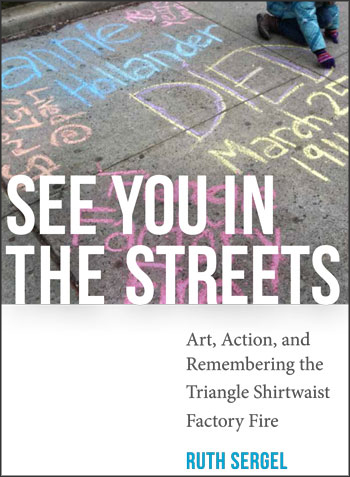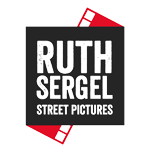Gaza Ghetto
Public Intervention (2014 – present)
There should be a word for it.
Earlier this summer I was sitting in a Berlin cafe with two other Jewish women. We each had a story about the moment when it happened. For me it was taking a language class and meeting a young man from Gaza. For the woman from Frankfurt it was while living in Jerusalem. A gear click-turns and the hazy fantasy of Israel is gone, replaced by something harsh and clear and true.
Question:
Am I living in alignment with my own values?
Gaza Ghetto was originally created in 2014 as a response to Israel's Operation Protective Edge. I wrote the name and age of each person killed in Gaza on my arm, photographed it and posted the image to social media. Israel killed roughly 2200 people that summer, most of them civilians, 548 were children. Since that time hundreds more Palestinians have been killed.
I used to believe that genocide was hard. Now I know that it is easy. An information bubble, an 'other' is all it takes. People line up to take the leap, contorting their beliefs like a pretzel to not confront the obvious.
The Gaza Ghetto project continues.
Please stay informed:
Democracy Now! has been doing exceptional reporting.
The Question of Palestine by Edward Said.
The Ethnic Cleansing of Palestine by Ilan Pappé
The Hundred Years' War on Palestine: A History of Settler Colonialism and Resistance 1917-2017 by Rashid Kahlidi
Follow journalists in Gaza:
Hind Khoudary
Motaz Azaiza
Bisan
Please also see Chalk, Voices of 9.11.

Sergel’s book is a case study in how to do art activism well. – Reviews in History
See You In the Streets offers public historians much fodder for thought and is also a good read. – The Public Historian
Ninety years before 9/11, the Triangle Shirtwaist Fire also destroyed a building in lower Manhattan, also led people to leap to their deaths rather than burn alive, but the culprit in the earlier case wasn’t terrorists, unless you bestow that name on ruthless employers. Ruth Sergel’s moving, riveting, and important book reminds us that ‘in 2011, the year of the Triangle Fire Centennial, 17 people in the United States were killed by terrorism, while 4,609 died in workplace accidents.’ —Rebecca Solnit, author, The Faraway Nearby
Ruth Sergel has been ahead of the curve for years and this book proves it. We should listen very carefully to what she wants to do next! —Frida Kahlo, founding member, Guerrilla Girls
In this passionate book, Sergel, a remarkable activist and artist, writes eloquently about one of history’s worst workplace tragedies—the Triangle Shirtwaist Factory fire of 1911. Sergel also explains how art can be used ingeniously to keep memories of that tragedy alive so that we in the twenty-first century never forget the hugely important lessons to be drawn from it. —Steven Greenhouse, author, The Big Squeeze: Tough Times for the American Worker
“The 2011 centennial commemoration of the Triangle Shirtwaist fire led by Ruth Sergel was among the most successful unions of art and social justice I have yet to witness in my thirty-year career. Beautifully written, See You in the Streets offers new generations of social and cultural activist insight into this magnificent model program and ways to utilize the ‘unexpected beauty’ in the world toward social justice.” —Steve Zeitlin, Founding Director, City Lore
Table of Contents
Welcome • The Fire • Chalk • Craft • Voices of 9.11 • Start Your Engines • Solidarity • Radical Tolerance • Fair Exchange • Leadership • Difficult Memory • Memorial • Sustainability • Acts of Return • The Centennial (Utopia) • See You in the Streets
The book includes essays by:
Suzanne Pred Bass, Gabrielle Bendiner-Viani, Cheryl Beredo, May Y. Chen, Esther Cohen, Richard A. Greenwald, Sherry Kane, Annie Lanzillotto, LuLu LoLo, Annelise Orleck, Kaushik Panchal, Emma Rosenthal, Elissa Sampson, Andi Sosin + Joel Sosinsky, Ellen Wiley Todd, Mary Anne Trasciatti and Sheryl Woodruff. The introduction is by Anne Valk.
Photographs:
Gabrielle Bendiner-Viani, Roy Campolongo, Nathan Farb, Diane Fortuna, Alfonso Guerriero + the Young Historians of PS 126, Heidi Gutman, Marjorie Ingall, Scott Jackson + his class at the Brooklyn International High School, Phyllis Kestenbaum, Serphin + Vincent Maltese, Gary Meister, RJ Mikelson (for Workers United), Shelley Jacobs Mintz, Ileana Montalvo and Vivian Sorenson.
See You in the Streets is a part of the Humanities and Public Life series at the University of Iowa Press edited by Anne Valk and Teresa Mangum. Catherine Cocks: acquisitions editor, Susan Hill Newton: managing editor, Karen Copp: production manager, Rebecca Marsh: copy editor, Laurie Pendergast: index editor, Allison Means: Publicity, James McCoy: director.
Heartfelt thanks to all who made this book possible.
There are moments in our lives when we are most fully ourselves. Its an electrifying feeling. Constraints that felt immutable, we step right out of them. Fully present in our bodies, its loose and sexy. We can spin on a dime to face any adversity and blaze right through. It is not that we are fearless, it is often terrifying, but the motion that is propelling us forward has so much joy, so much life force, that our demons become tiny in comparison. With crackling energy, we find ourselves whole.
My work is directed at what makes those moments possible for myself and for others. The crooked path from blown out despair, when we lack the energy to tackle even the simplest tasks, to gathering our resources to march forward once again. There is a delicate peeling apart of the layers of personal struggle from political despair. To emancipate ourselves we have to exorcise internalized self-censorship and seek communion with others to find brash hope. My work across film, public works and new media, seeks out what makes individual and social transformation possible.
Download the introduction to See You In the Streets.
